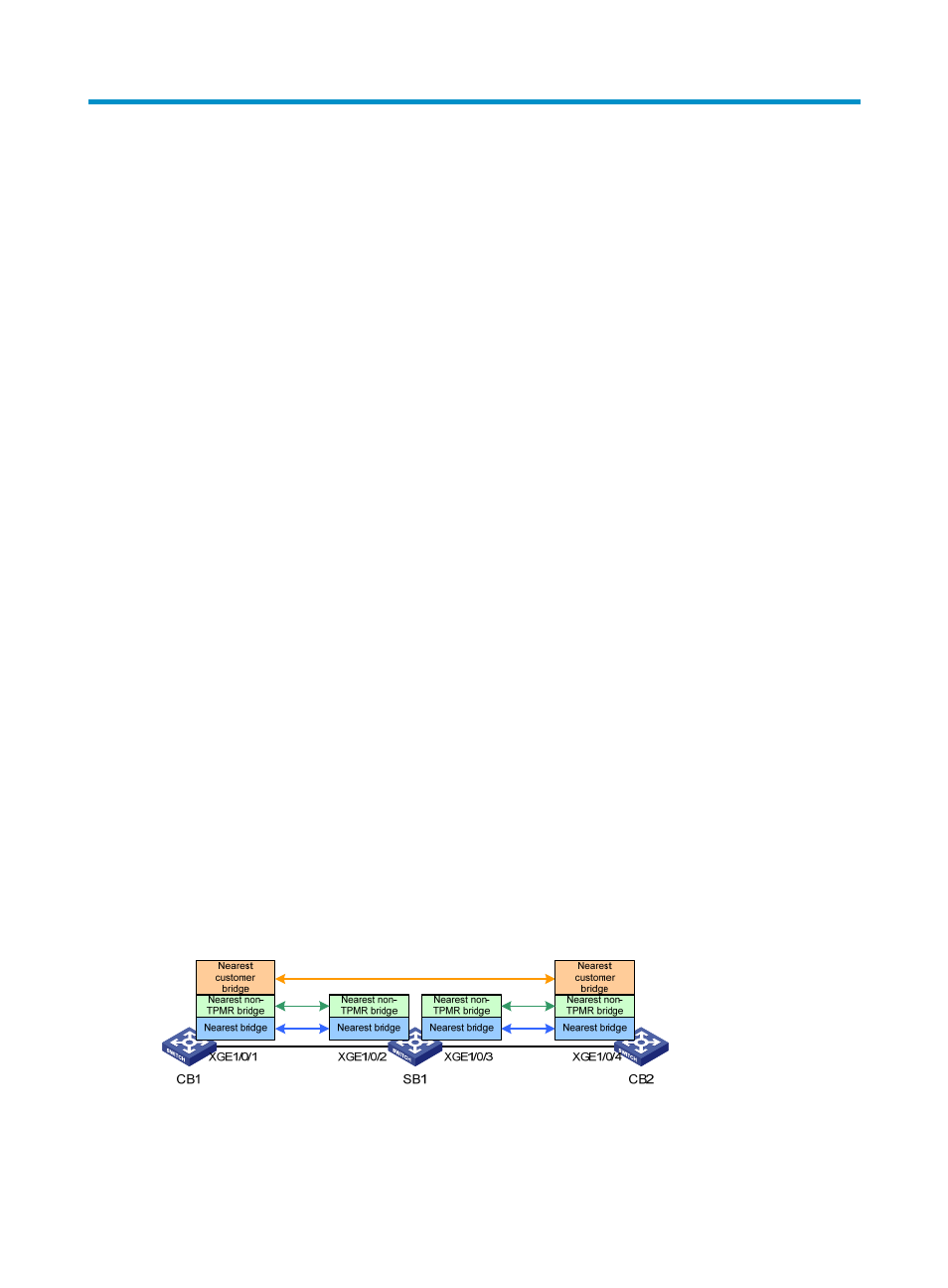Configuring lldp, Overview, Basic concepts – H3C Technologies H3C S12500-X Series Switches User Manual
Page 163: Lldp agent, Lldpdu formats, Configuring vlans

152
Configuring LLDP
Overview
In a heterogeneous network, a standard configuration exchange platform ensures that different types of
network devices from different vendors can discover one another and exchange configuration for the
sake of interoperability and management.
The Link Layer Discovery Protocol (LLDP) is specified in IEEE 802.1AB. The protocol operates on the data
link layer to exchange device information between directly connected devices. With LLDP, a device sends
local device information (including its major functions, management IP address, device ID, and port ID)
as TLV (type, length, and value) triplets in LLDP Data Units (LLDPDUs) to the directly connected devices. At
the same time, the device stores the device information received in LLDPDUs sent from the LLDP neighbors
in a standard MIB. For more information about MIBs, see Network Management and Monitoring
Configuration Guide. LLDP enables a network management system to quickly detect and identify Layer 2
network topology changes.
Basic concepts
LLDP agent
An LLDP agent is a mapping of an entity where LLDP runs. Multiple LLDP agents can run on an interface
at the same time.
LLDP agents include the following types:
•
Nearest bridge agent.
•
Nearest customer bridge agent.
•
Nearest non-TPMR bridge agent.
A Two-port MAC Relay (TPMR) is a type of bridge that has only two externally-accessible bridge ports,
and supports a subset of the functions of a MAC bridge. A TPMR is transparent to all frame-based media
independent protocols except those destined to it and those destined to reserved MAC addresses that the
relay function of the TPMR is defined not to forward. LLDP exchanges packets between neighbor agents
and creates and maintains neighbor information for them.
shows the neighbor relationships for
these LLDP agents. LLDP has two bridge modes: customer bridge (CB) and service bridge (SB).
Figure 48 LLDP neighbor relationships
LLDPDU formats
LLDP sends device information in LLDPDUs. LLDPDUs are encapsulated in Ethernet II or SNAP frames.